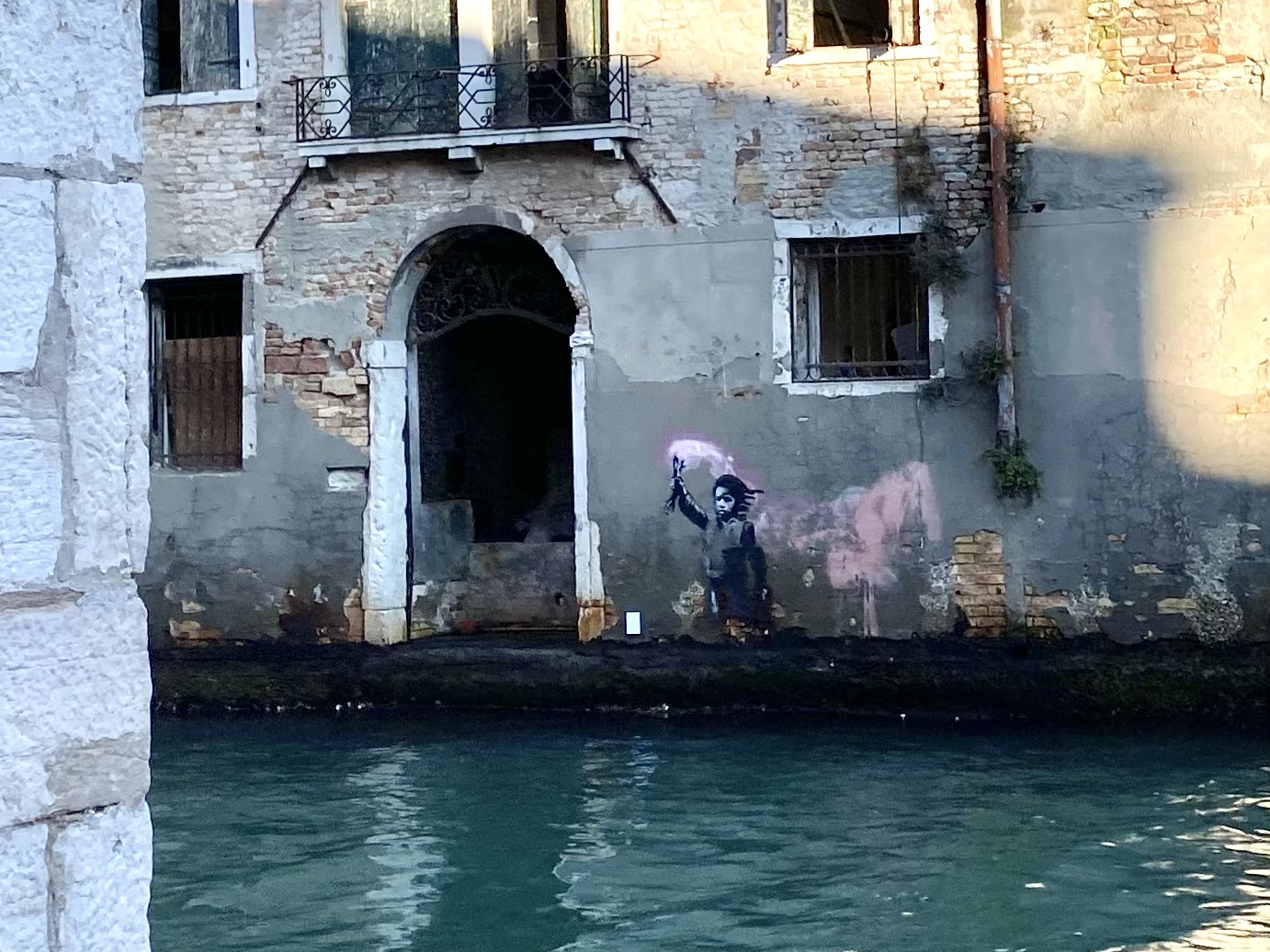
Street Art in Venice – An Unexpected Surprise
One thing that surprised me the most during my week-long trip in Venice was the amount of graffiti that covered the city. As my classmates and I made our way through narrow alleyways and spacious campi (communal squares), we spotted applications of spray paint on all kinds of surfaces imaginable: doors, windows, bridges, walls of houses, shops, and even along canals. There was almost just as much art on the streets as there was in the churches and museums.
Initially, I was taken aback, and honestly, I was offended. The crumbling walls of Venice can be dated back to the twelfth century. The layered, and beautifully worn conditions of the buildings are a reflection of the city’s storied history. I felt that the graffiti tainted Venice’s charm and implied a lack of appreciation that overlooked its beauty.
But once I took a moment to stop and try to understand graffiti from the perspective of a Venetian local, I became fascinated. I realized that while the painted masterpieces that adorn the city’s galleries reflect the Venice of the Renaissance period, it’s what’s painted on the museum’s exterior walls that reflects the Venice of today. In a city filled with tourists year-round, street art has become a way for the local community to send political messages, give directions to visitors, share their artistic talents, and spread their hope for peace and love. It is a form of art that has become integrated into the existing environment. Now, I find myself looking out for these hidden treasures in the nooks and crannies of this colorful city.

